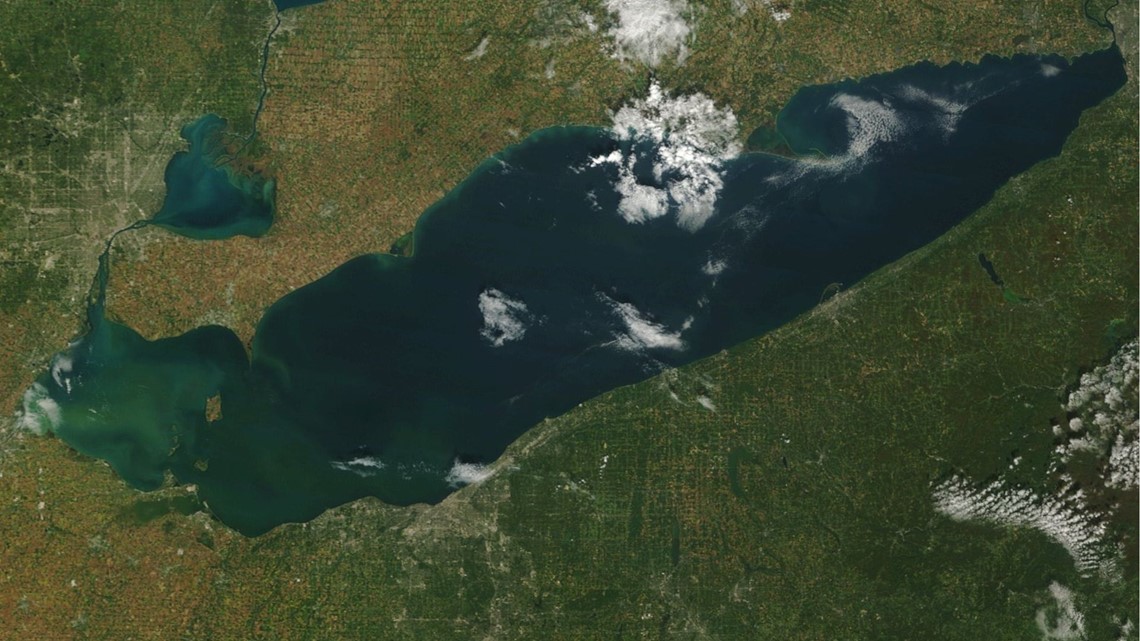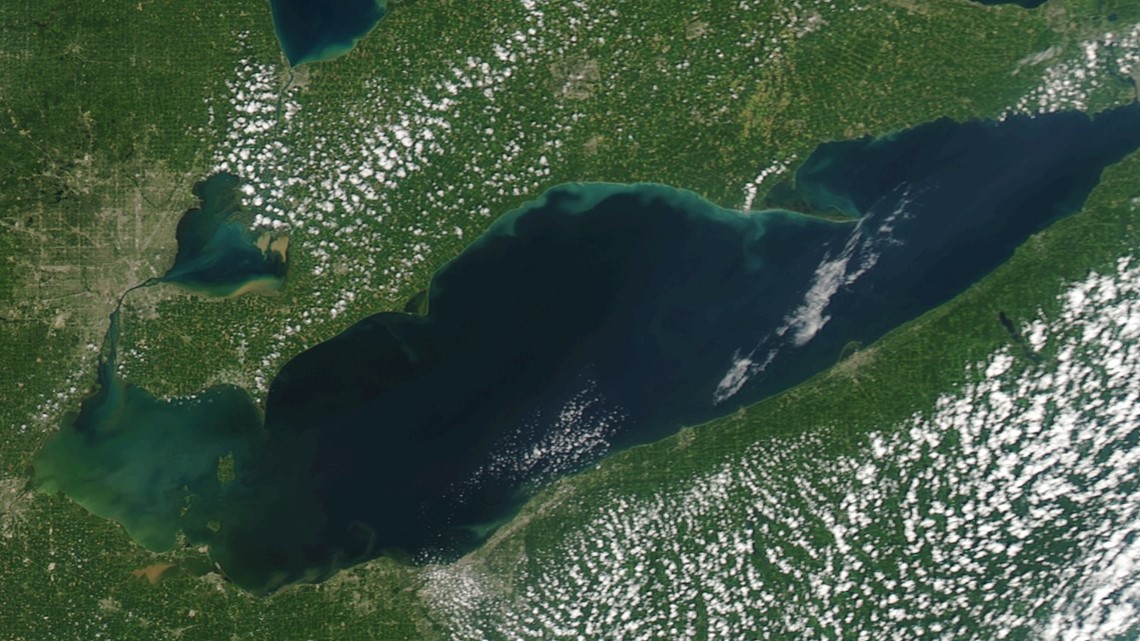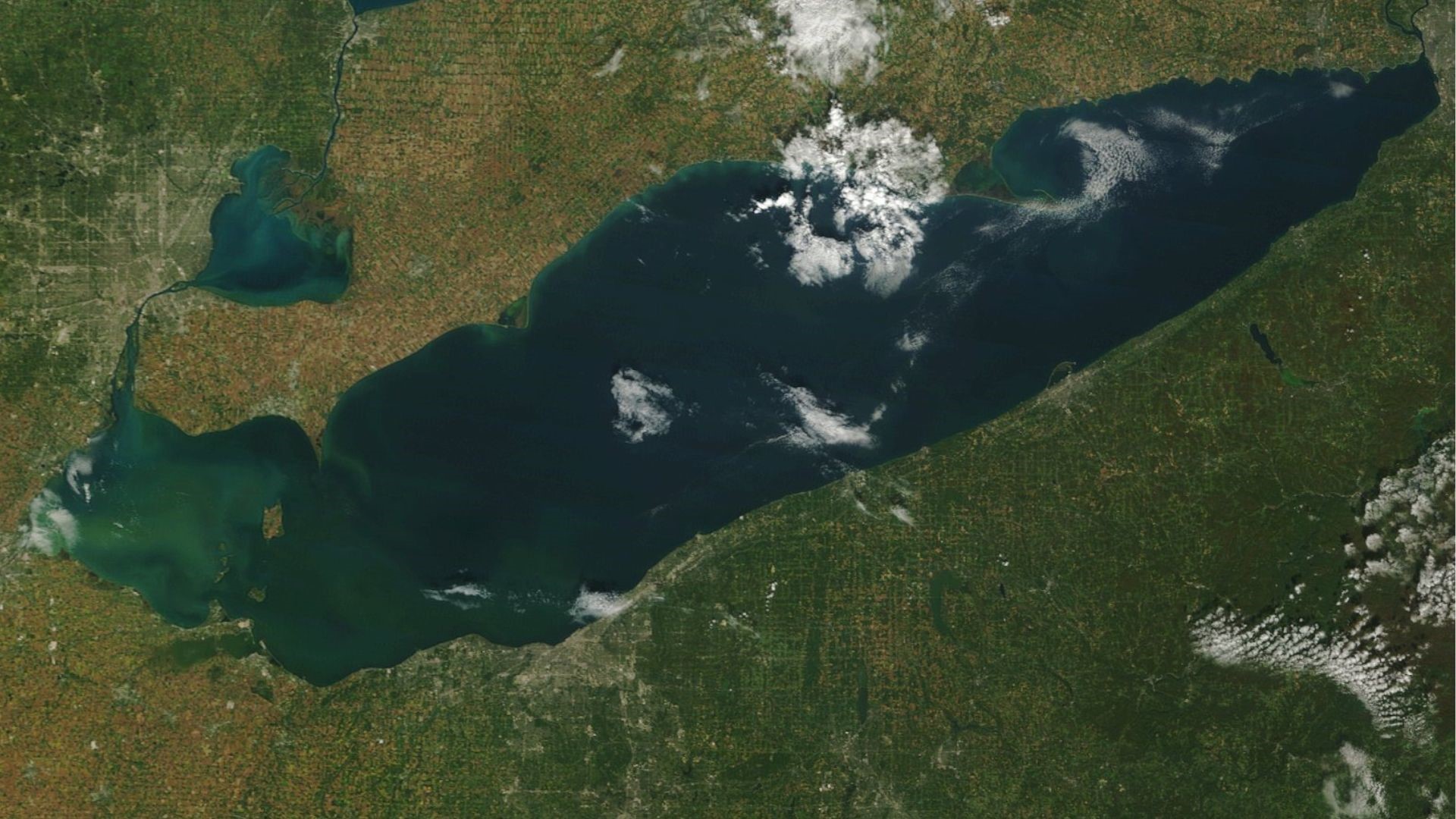TOLEDO, Ohio — The Lake Erie harmful algal bloom (HAB) has "diminished substantially" in accordance with typical seasonal trends, according to the National Oceanic and Atmospheric Administration and the National Centers for Costal Ocean Science.
In an imagery analysis and forecast document released Monday, scientists said the bloom of cyanobacteria and other microorganisms - which can prove toxic to humans and other animals - appears to have decreased in size since its peak this past summer, although cloud cover and higher wind speeds prevented scientists from determining the precise square mileage of the bloom. Earlier this summer, the bloom covered as much as 360 square miles, spanning from Stony Point, Michigan past Huron, Ohio, in the lake's western basin.
As of Monday, the bloom is mostly concentrated in the Maumee Bay area and to the east in offshore waters, NOAA said. The western basin bloom was a mix of Microcystis and Dolichospermum, while Sandusky Bay had a local bloom of mixed cyanobacteria.
Satellite imagery shows what Lake Erie looked like on Oct. 1, 2023:


The image below shows the extent of the bloom on Aug. 28, 2023 for comparison:


The diminished extent of the bloom is in accordance with the change of seasons. According to NOAA scientists, the bloom is most prominent between the months of July and October. Therefore, it is very likely the HAB will continue to diminish, though warmer temperatures, like those expected this week, could slow that process.
Earlier this summer, local health officials issued a Recreational Public Health Advisory following high levels of cyanotoxins in the Maumee Bay. The advisory has since been lifted and swimming is once again permitted at Lake Erie Beach.
During the spring, experts predicted a slightly smaller-than-average algae bloom this year, measured quantitatively in terms of a severity index around 3. On July 27, however, scientists with the NOAA updated their forecast to predict a bloom severity of 4.5 at minimum, with a maximum of 5.5.
The greater the severity index, the larger the bloom. Some years, such as 2015, 2017 and 2019 delivered large outbreaks of harmful algae with a severity index near or over 10.
Though this year's bloom was expected to be smaller than usual, it still posed hazardous health impacts, especially in the western basin.
It will not be clear until the end of the season where the 2023 HAB fell on the severity index.
WATCH MORE CLIMATE VIDEOS FROM WTOL 11

